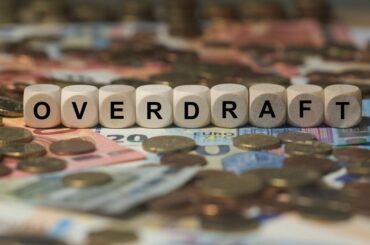Information presented on this web page is intended for informational and educational purposes only and is not meant to be taken as legal, financial, investment or tax advice. We do not accept any responsibility for any trading or investment related losses. Please review our disclaimer on before taking action based upon anything you read or see.
Many account owners usually ask this question how to dispose of a voided check today. Maintaining bank accounts entails a slew of annoyances, one of which is getting rid of your voided checks. Unfortunately, most people keep their checks in obscure locations, and if they aren’t cashed soon, they are frequently forgotten. The initial account holder may find himself in problems if a thief discovers those years later.
Consumers and businesses can save time, money, and legal headache by properly disposing of voided checks. As a result, we’ve written this post to show you how to properly dispose of a voided check.
What is the Meaning of a Voided Check?

Avoided check is one that no more can be acknowledged as payment from anybody. It is not a blank check because it has the term “VOID” written across it. Your account information will remain on a voided check, but you cannot use it to make a payment.
How to Dispose of a Voided Check

Some folks throw their voided checks in the garbage. What’s the harm in that? Because the check has been canceled, it does not appear to be a risk. They are, however, completely wrong. The following information is frequently found on checks:
- Name of the account holder
- Address
- Number to call
- The account number, which is a unique identifier
Not only could someone attempt to pass a check in the account owner’s name, but possessing all of this information allows a scammer to commit other frauds or even steal your identity. For example, a fraudster can use someone’s personal information to get access to or generate:
- Accounts for loans and credit cards
- Refunds of income taxes.
- Fake IDs.
- Portals for making payments online.
The tax consequences alone are a source of concern too. Overall, consumers and business owners should protect themselves by promptly discarding canceled checks. You have the following options at this point:
Services for shredding
Shredding services are the safest way to dispose of obsolete banking records, including checks. Financial institutions occasionally provide these benefits to their consumers for free, usually for a limited time. Neither the financial institution nor the customer wants to deal with checks drawn on closed accounts.
Home cutting options
When deciding how to dispose of a voided check, you have a few options at home. A cross-cut shredder is a safe way to dispose of checks at home. It quickly degrades ancient records into a pile of rubbish. A sharp pair of scissors, on the other hand, does the same too.
Basic shredders, on the other hand, frequently leave paper strips behind. Garbage collectors will have an easier time piecing together sensitive account information as a result of this.
Other creative options
There are many other inventive alternatives for disposing of voided checks besides cutting or employing shredding equipment. If you only have a few voided checks to get rid of, a pail of hot water and bleach would suffice. You can either put the pulp in your bin or throw it away.
Another option is to stuff them into a canvas backpack and wash it in hot water. Unfortunately, the voided checks will be soaked in this technique, rendering them illegible. To keep the debris contained during the wash, make sure the bag is firmly sealed.
Disposing of voided checks received via mobile devices
Along with unfilled checks, consumers and companies are in danger from voided checks received using a mobile banking app. To prevent scammers from cashing these checks a second time, most financial institutions demand account holders mark them “DEPOSITED” or “VOID.” To reduce this possibility, individuals can take the extra step of destroying the check by emptying the database after processing.
How to Make a Check Void
/Voided-Check2-57b204813df78cd39c2d59a6.jpg)
To void a check, just take a blank check from your ledger and write the word “void” across the check’s face in huge letters. You’ll want to write it in large letters that everyone can read, and you’ll want to use a large, dense pen if at all feasible.
You will not be required to sign it or provide any further information. Make sure you keep accurate records once you’ve canceled your check. It would help if you marked in your ledger that this check has been voided. Write VOID, followed by the check information such as the date and a note containing the person’s name to which you presented the voided check.
You should make a copy for your records as well, also can scan it on your computer or save a photo of the canceled check in your files. You can send the check by post, hand it in person, or photograph it and email it to the receiver. If you’re going to transmit the voided check digitally, using a regular email-sender might be a little dangerous. Instead, send the photograph through a secure and encrypted channel if at all possible.
Tip: Do not conceal the account number or forwarding numbers at the base of the check when entering “VOID.” This is the information the receiver will need to make a direct transfer to your account.
Reasons for Voiding a Check

You may need to void a check for a variety of reasons. This includes:
You’ve made a blunder.
Instead of attempting to remedy a check error, it is preferable and safer to void the check entirely. When you frequently write checks for invoices and other payments, you may inadvertently write the wrong amount or misspell something. In this situation, you write void across it and file it. You won’t have to worry much about your check getting into the wrong hands if it goes missing this way.
You desire to accept direct deposits.
A most common reason for sending a voided check is to provide employers with your account information. For example, your organization will want your banking details and ask for a voided check if you just changed jobs or savings accounts. They will set up a direct transfer for your payment into your bank account using this information.
It also makes it easy for your finance team to remember the account number and routing information and avoid misinterpreting what you said or inputting incorrectly if you didn’t provide them a voided check.
You need to arrange recurring payments
If you need to arrange recurring bill payments or traditional investment contributions, you may also need to send a voided check. Again, it’s often as simple as entering the information into your banking institution’s or billing account’s website.
The avoided check will suffice if you don’t want to deal with your finances online or are uncomfortable doing so. Some organizations may ask for a canceled check to acquire your account details and even set up an electronic money transfer.
You want to make a check payment cancellation.
If you’ve signed a check but wish to cancel it, merely returning it and voiding it renders it financially useless and prevents it from being deposited. This also applies if you make an error when writing a check (such as writing the inaccurate cash amount), as voiding the check prevents any bank from processing it.
Note that if you’ve already delivered the check to someone to cash, you won’t be able to void it at that time. But, of course, if you wrote the check to a trustworthy friend or family member, you may be able to have it canceled and a fresh one written. Otherwise, you’ll have to go to your bank and ask for a check to be blocked.
Frequently Asked Questions
Can you discard voided checks?
Yes. If your bank continues to give you copies of voided checks, you must properly dispose of them. Otherwise, merely tossing them in the garbage could leave you vulnerable to identity theft.
How do you get rid of voided checks?
Shredding your voided checks is the most straightforward approach for safely destroying them. If you only have a small number of them, you can cut them up using scissors. Then, cut your name and bank details lengthwise for increased security, and dispose of the parts in multiple bags and on various days.
When is it appropriate to void a check?
If you have a firm and your vendors want to be paid digitally, for example, voiding a check could be part of the process of setting up automated payments.
How long a voided check should be kept?
Personal, corporate, and payroll checks have a six-month expiration date (180 days). Checks from some firms are pre-printed with the phrase “void after 90 days.” The pre-printed text is intended to encourage consumers to deposit or paychecks sooner rather than later, and most banks will honor the checks for up to 180 days.
Do banks damage voided checks?
Yes. You can always ask your bank for assistance if you don’t know how to dispose of your voided check. Many banks offer check shredding services for the secure disposal of voided or unused checks.
Conclusion
In conclusion, checks come with various merits. And if you desire more help regarding how to dispose of a voided check, the tips highlighted above will aid you immensely.




